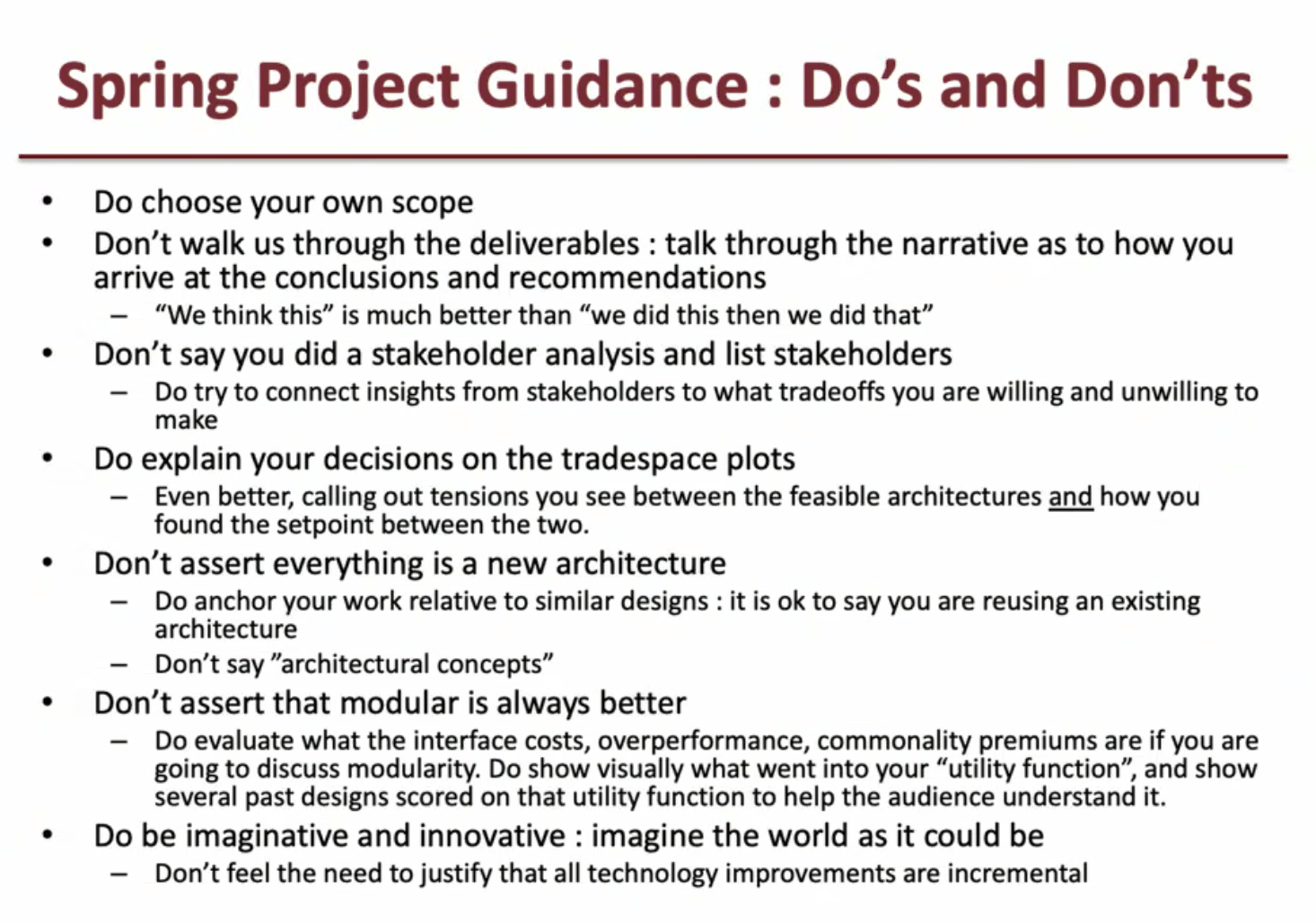meeting
↑ 58 References
I think that’s partially because code, in principle, contains the architecture. It’s the essence of designing the system
this doesn’t mean it’s actually easy to extract that, and that’s what Dan Sturtevant is working on
Agent-based modeling and system dynamics modeling are fundamentally different and incompatible ways of modeling
Feels like evaluation criteria for trade studies, attributes for tradespace and matrices are really the operative work. These different methods are essentially different ways of data visualization
I tend to ignore the note granular, complicated, step by step processes that professors outlines
This seems like the process could be quite different for first time, one off systems vs repeated builds
I guess I oscillate between thinking about building the product vs building the process that delivers the product at scale
use neural networks to partially estimate outcomes at higher dimensions, somewhat side-stepping the Curse of Dimensionality
The difference between one-off vs iterative product development seems like it will determine how you want to hybridize between Product development process and Agile development
increasing capacity may not always prove to increase utilization, if the corridor is in a complex system that has other moving parts
route of actual work and proximity to “area of demand” indicates how efficient the actual work is
Looking at a set of products and asking how many different architectures are there is a good way to determine if we have a shared idea of what falls under the scope of architecture
Connectivity / IoT might be a place where we’ve seen minimal incremental value, but might see transformational value

